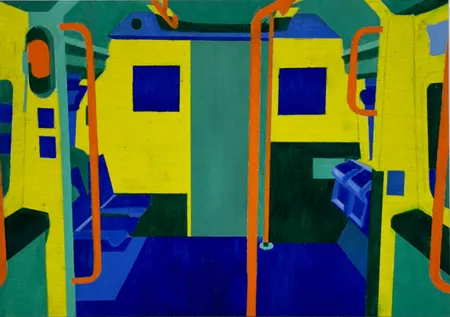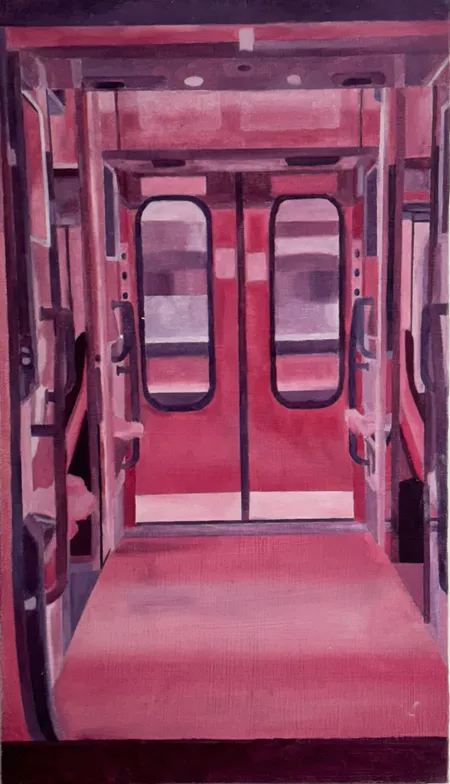Carl Engmann

Degree: MA Fine Art
University: University of East London
Graduation Year: 2024
New Blood Art Commentary
Carl Engmann’s work is defined by his unwavering focus on the interiors of trains, a subject he approaches with near-obsessive dedication. Through his paintings, he transforms these transient, functional spaces into vibrant studies of colour and movement. Engmann’s compositions capture the dynamic interplay of shifting forms and tones, offering a deep exploration of how light, structure, and colour interact in these confined environments.
Deeply inspired by Stanley Whitney’s freedom with colour, Engmann infuses the ordinary with a remarkable sense of vitality, layering tones to create tension and harmony within each piece. His focus on trains is not just about the spaces themselves but about how they become containers for energy, rhythm, and quiet moments of stillness. This singular focus drives a unique perspective, where the everyday is transformed into a world of dynamic abstraction and intimate observation.
Artist Statement
I am the trainspotter of contemporary painting, but from the inside. When I say "inside," I mean the interiors. Train interiors offer me the colour relationships and ever-changing compositional structures that I love to record. I am often punctual and addicted to the obsessions, rituals, and routines of making paintings, frequently in series. I am an abstract painter dressed up as a figurative one.
These paintings are colour studies where I invent specific interactions and tensions. I want the paintings to permeate stillness, as a snapshot of a prosaic ordinary moment, yet I also want them to be vibrant, free, and full of movement and sensation.
I paint in two different ways. One could be called illusionistic or modelled colour, where I make use of white oil paint to permeate a stronger colour; these become tonal. This way of making paintings references a tradition that can be traced back to the early Renaissance frescos of Fra Angelico, through to the empty interior works of Edward Hopper.
The other way I make paintings is geometric, using flat colours straight from the paint tubes. These geometric, graphic paintings could be argued to directly link to a lineage that goes back to Josef Albers' teaching on the 'interactions of colour' at Yale, absorbed by Michael Craig-Martin as a young artist who in turn taught my tutor Alexis Harding in the mid-90s.
Another artist that fascinates me is Stanley Whitney, purely due to the freedom of colour he allows into his paintings.




